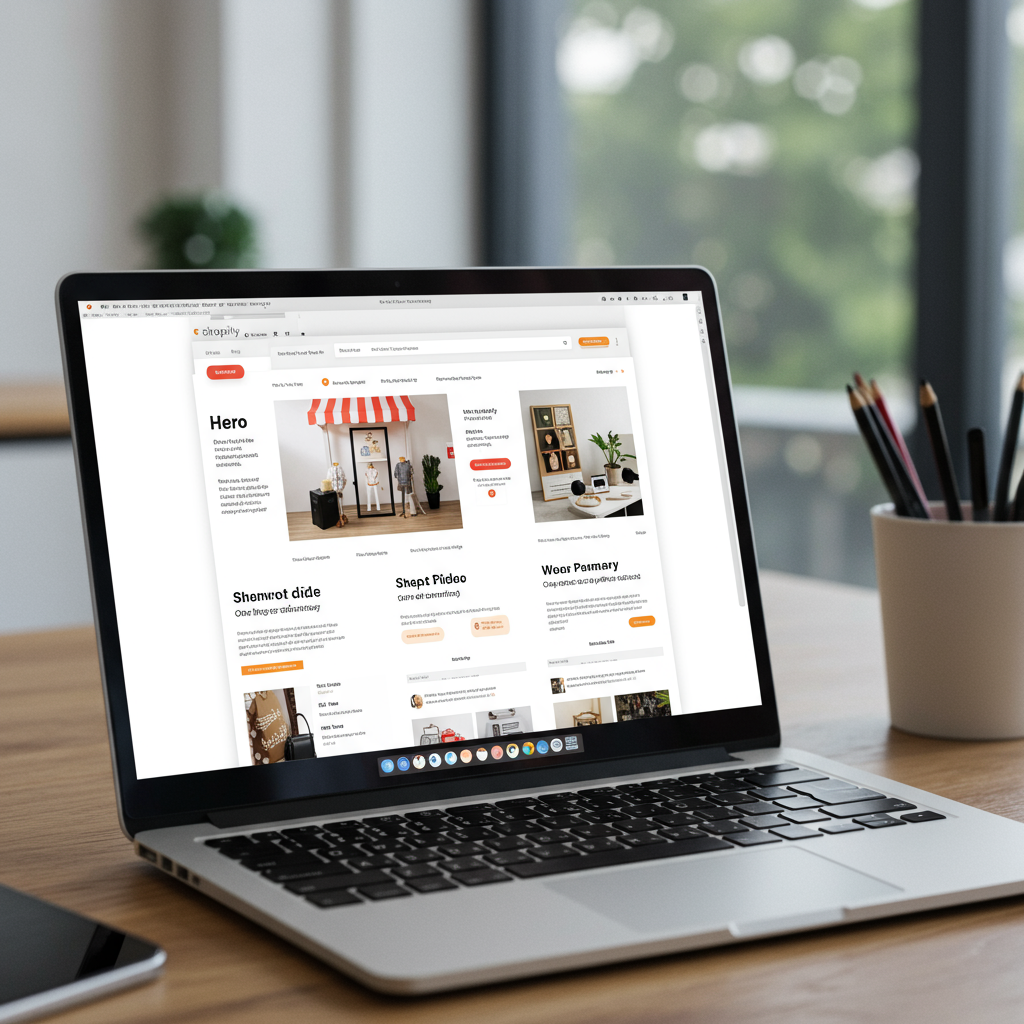Unlock higher conversions and a seamless customer experience with these forward-thinking design tips for your Shopify store’s most crucial page.
Hello fellow Shopify merchants! As we look ahead to 2025, the digital landscape continues to evolve at an incredible pace, and staying ahead is key to success.
Your Shopify store’s homepage isn’t just a digital storefront; it’s your brand’s first impression, your most powerful sales tool, and the gateway to your entire product catalog.
In this article, I want to share some crucial design tips that will help you optimize your homepage for success in the coming year, ensuring it resonates with modern consumers.
We’re not just talking about aesthetics here; we’re focusing on functionality, user experience, and conversion optimization – the pillars of a thriving online business.
The ultimate goal is to create a homepage that not only looks fantastic but also guides your visitors seamlessly towards making a purchase, turning browsers into buyers.
First and foremost, let’s talk about the hero section. This is the very first thing your visitors see, and it needs to grab their attention instantly and communicate your value.
For 2025, consider dynamic, high-quality video backgrounds or interactive elements that showcase your products in action, creating an immersive first impression.
Your main headline should be clear, concise, and immediately communicate your unique selling proposition (USP). What problem do you solve? What makes you different?
Below the headline, a compelling call-to-action (CTA) button is essential. Make it stand out visually and use action-oriented language like “Shop Now,” “Discover Our Collection,” or “Get Started.”
Next, navigation. A cluttered or confusing navigation menu is a surefire way to lose potential customers, leading to frustration and high bounce rates.
Ensure your main menu is intuitive, logically organized, and easily accessible, especially on mobile devices where screen real estate is limited.
Consider implementing mega-menus for larger product catalogs, but keep them clean, visually appealing, and easy to scan to avoid overwhelming users.
Product highlights are critical. Don’t just list products; curate them. Showcase your bestsellers, new arrivals, or seasonal collections prominently on your homepage.
Use high-resolution images and concise, benefit-driven descriptions that entice visitors to click through for more details and explore your offerings.
In 2025, personalization will be key. Leverage Shopify apps or built-in features to display personalized product recommendations based on a visitor’s browsing history or demographics.
This level of tailored experience can significantly boost engagement and conversion rates, making each visitor feel uniquely catered to.
Social proof remains incredibly powerful. Integrate customer reviews, testimonials, or user-generated content directly onto your homepage to build trust.
Seeing that others trust and love your products builds confidence and encourages new visitors to take the plunge, validating their potential purchase.
Think about incorporating a dedicated section for your brand story or an “About Us” snippet. Customers increasingly want to connect with the brands they buy from.
Share your mission, values, or the passion behind your products. This builds trust, fosters loyalty, and creates an emotional connection with your audience.
Mobile-first design is no longer optional; it’s mandatory. A significant portion of your traffic will come from mobile devices, so optimize for them first.
Ensure your homepage is fully responsive, loads quickly, and offers a seamless experience on smartphones and tablets. Test it rigorously across various devices.
Page speed is another non-negotiable. Slow loading times lead to high bounce rates and frustrated customers who will simply abandon your site.
Optimize your images, minimize unnecessary apps, and consider using a lightweight theme to ensure your homepage loads in under 2-3 seconds.
Don’t forget about SEO. While the homepage isn’t typically optimized for specific product keywords, ensure your title tag, meta description, and main headings are optimized for your brand name and overall niche.
Integrate a blog section or recent articles if you produce content. This positions you as an authority in your niche and provides valuable content for your audience, boosting organic traffic.
Accessibility is also gaining prominence. Ensure your design is usable by everyone, including those with disabilities, by following WCAG guidelines.
This means proper color contrast, clear font choices, and keyboard navigation support. It’s not just good practice; it’s good business and expands your potential customer base.
Finally, remember that your homepage is never truly “finished.” The digital world is dynamic, and your store should evolve with it.
Regularly review your analytics, conduct A/B tests on different elements, and gather customer feedback to understand what’s working and what isn’t.
Be prepared to iterate and adapt your design based on performance data and emerging trends to keep your homepage fresh and effective.
By focusing on these design principles for 2025, you’ll create a Shopify homepage that not only attracts visitors but converts them into loyal customers.
It’s an ongoing process, but the rewards of a well-optimized homepage – increased sales and customer satisfaction – are immense.
What do you think about these tips? Are there any other strategies you’ve found particularly effective for your Shopify homepage? I’d love to hear your thoughts!






